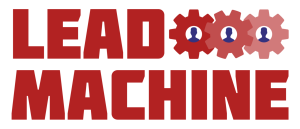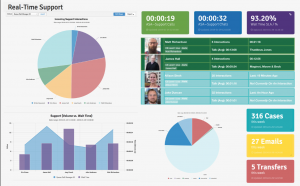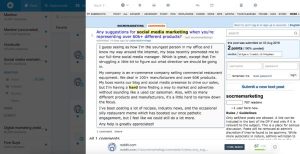Silicon Foundry is hunting for innovative tech startups to help problem solve for their corporate clients. Recently, the focus has been on AI and marketing.

Camille Manso is a partner with Silicon Foundry, an advisory firm that essentially arranges matches between their corporate clients and innovative tech start-ups. She tells us that the attention given to AI start-ups drove Silicon Foundry to start looking closely at marketing use cases. The firm is independent, holding no equity in the startups it evaluates or recommends. (The interview has been edited for length and clarity.)
Q: Tell us about what you’re doing with Silicon Foundry.
A: I’ve been with the firm for about three years. Prior to that, I was a corporate attorney — so a pivot, definitely. On the basic level, we work with Fortune 500 up to Global 2,000 corporations and help plug them into the startup ecosystem. We help them navigate emerging trends in technologies and solve their biggest problems with enterprise-ready startup solutions. We track early-stage startups too.
We’re industry-agnostic; we work across oil and gas, CPG and retail, supply chain and logistics, the idea being that technology is pretty much horizontal. Some of the most exciting innovations are happening at the intersection of these different industries. Marketing was not really part of this scope until this AI lifecycle. What really catalysed it was a lot of the questions we were getting about which use cases were generating ROI today and we kept coming back to marketing-related use cases.
The outcomes we typically orient towards could be an investment, an acquisition, a commercial relationship, a joint venture.
Q: One example of a startup you have worked with is Echo AI. Can you explain what was of interest there?
A: Echo AI came onto a radar screen because we were looking for AI-driven consumer insight platforms that can help marketing, sales and customer service teams optimize and become more efficient. What we’ve seen are the traditional mediums through which marketing campaigns are pushed out — emails, websites, social media. What we haven’t seen as much is how you take these personalized interactions that have emerged, particularly with chatbots, and use that data to optimize your marketing campaigns and messaging. That’s what Echo AI is able to do.
It enables brands to learn intent based on what they hear from their customers and to automate actions based on those insights.
Q: Does Echo AI itself execute on the insights, or does it integrate with other systems.
A: It integrates with other systems — the CDPs, the CRMs.
Q: We’re seeing an explosion in the number of AI startups. How do you identify the ones of interest?
A: Three thousand new tools, more or less, around 70% of which are genAI-based (I did see your piece). No surprise. It’s important to distinguish between a tool and an entire company. We’ve had multiple conversations with VCs and there were some interesting insights into how long it took them to make their play in genAI. It’s because a lot of them saw tools, not companies.
We take an investor lens. We look at the product itself and the team, so when we surface companies we look at who the founders are, who has invested in them and then who they have partnered with.
Q: Although you’re matching up corporations with martech vendors, there are pressures to cut tech budgets aren’t there?
A: With a lot of the cost pressures large corporations are facing, there’s a question on where do they cut. Where can they reduce marketing spend? If you look at certain spaces, marketing agencies for example, there’s a big question as to what role they’ll play in the future, especially with all these tools coming out. These tools make it so much easier for the capabilities to be brought in-house. The agencies used to have a leg up when it came to the data they have access to across multiple brands. Some of these tools may offer that by anonymizing data.
Q: Not just agencies, but the big holding companies are developing their own AI technologies to work on enormous data-sets from all the agencies under their umbrellas. The Dentsus and WPPs of the world are becoming AI companies. But for a smaller agency, if a brand can identify target audiences in-house and create content in-house, what is there for an agency to do?
A: Absolutely.
Dig deeper: How the big holding companies are handling genAI
Q: Can you give us some more examples of solutions you’ve been looking at?
A: Historically, it’s been really difficult to gather in-store data and make it available to brands. Now, the retailers, the stores themselves may have that data, but how does it get to the brand? One company I am particularly excited about is called Raydiant. They have a technology called Lift & Learn.
After the COVID years of online shopping, people expect to have product information available at a click — see the features, compare it with another brand, another product. Lift & Learn enables you to have that information at your fingertips in the store. Imagine you lift a product and an in-store screen pulls up information about the product. Because it’s a display, you can cross-sell, you can have marketing in there — but it also gathers data like eye movement, demographics, and all this data becomes available to the brand. A brand can see what a customer is looking at online, but can now tie it to their in-store experience and interactions [with appropriate permissions].
One other quick example. VidMob operates a platform that offers tools to enhance the effectiveness of digital ads through AI-driven insights and optimizations, increasing ROAS for brands. The company’s solutions, including Creative Scoring, Creative Analytics, and Creative Studio, aim to improve campaign performance by aligning creative output with platform best practices and infusing data-driven insights into production processes????.
Q: Some people are worried about disillusionment being created when AI fails to transform businesses top-to-bottom, but it seems to me you’re looking at very specific use cases for AI.
A: That reminds me of the saying, we overestimate what can be done in a day and underestimate what can be done in a year. There is a lot of hype still around AI. It is a challenge getting adoption within large corporates. You can’t just say, we want to buy the tool; you need to have the right training, the right resources in order to utilize the tools in the right way. Yes, we look at specific use cases, but we also like to look at the product development roadmap so you can see what’s coming down the line.
The post Camille Manso: Looking forward with AI appeared first on MarTech.
(12)
Report Post






